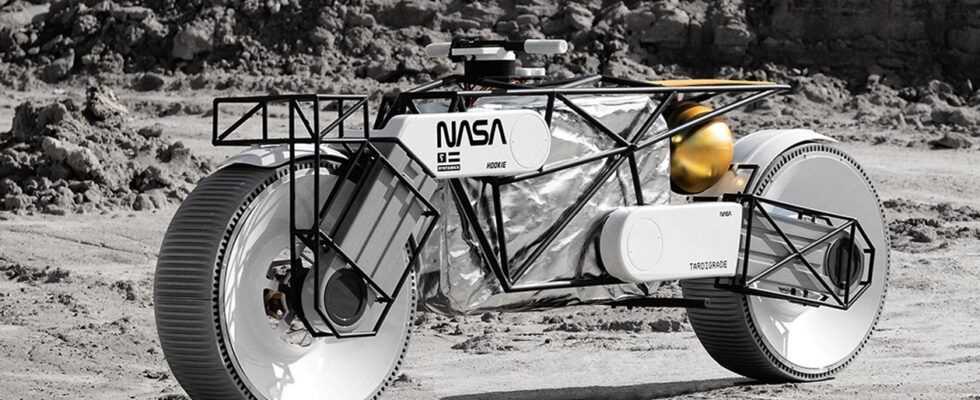For its manned lunar missions in the early 1970s, the US space agency NASA developed, among other things, a four-wheeled expedition car called the Lunar Roving Vehicle. A good 50 years after the extraterrestrial electric car was first used, the Russian designer Andrey Fabishevsky thought about what a two-wheeler equivalent would have looked like.
On the basis of his computer retouching, the German customizer specialist Hookie from Dresden has now built a real “lunar bike” called the Tardigrade. Even if this unique piece was not developed according to strict technical specifications for use on a space expedition, it has a look appropriate for the intended purpose. In any case, the curators of the Peterson Automotive Museum in Los Angeles were so impressed that they will be showing the e-bike from Germany as part of their special exhibition ADV: Overland from mid-October.
You can see an elongated e-bike on giant and futuristic-looking wheels that are guided by one arm. The electric motorcycle is carried by an airy, light-looking lattice frame structure, in the center of which is the battery and drive technology wrapped in silver foil from the Swedish e-motorcycle specialist Cake. The aesthetics of the tardigrade give the impression of a specification that has been strictly reduced to functionality. Curlicues, ornaments or elegant lines? Nothing. At the same time, the bike offers a few technical gadgets: There is an electronic drive-by-wire steering that is controlled by an electric motor and an app. In addition, the naturally airless tires were made in the 3D printer from robust material with carbon components.
In terms of drive technology, however, the 2.60 meter long and 134 kilogram heavy vehicle remains unspectacular. Hookie mentions a top speed of just 15 km / h, while the range of 110 kilometers is quite generous. For comparison: The Lunar Rovers actually used on the moon and also remained there were designed for a range of 90 kilometers, which, incidentally, was more than sufficient in view of their relatively short excursions. (SPX)
